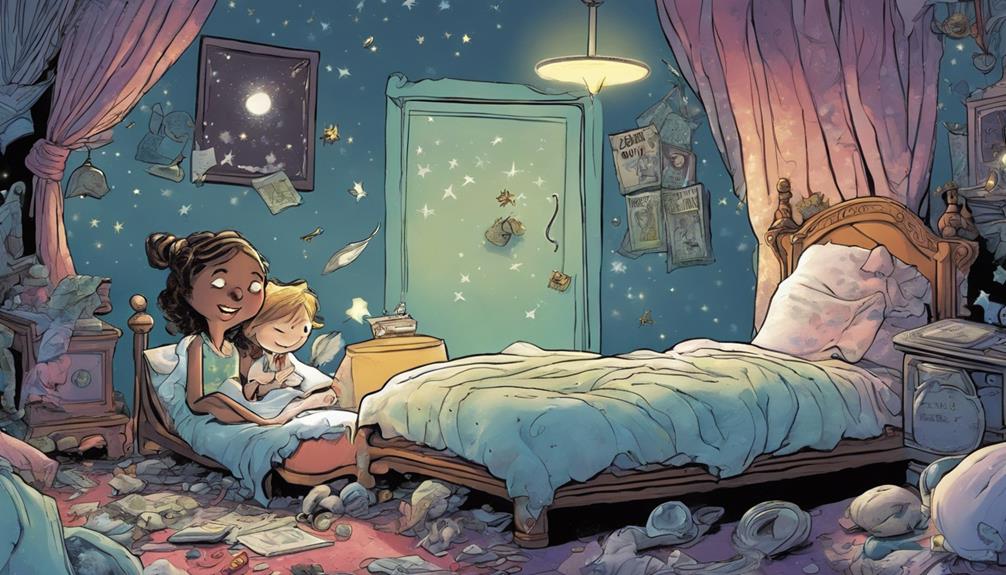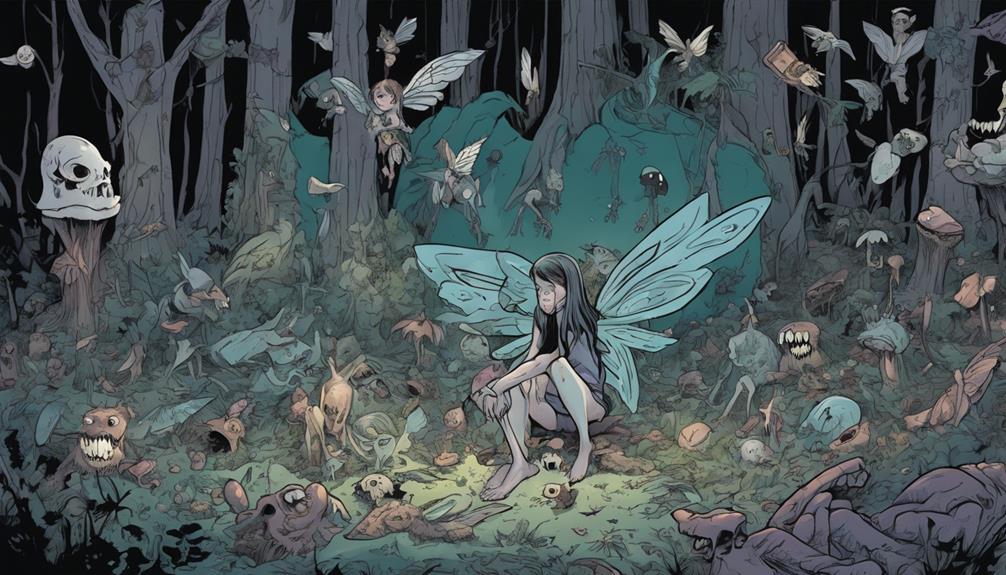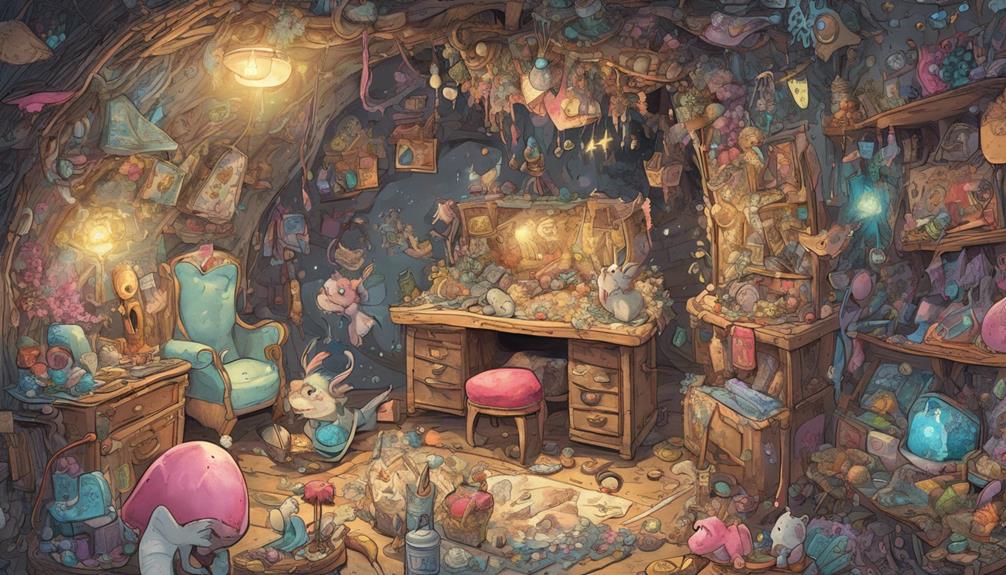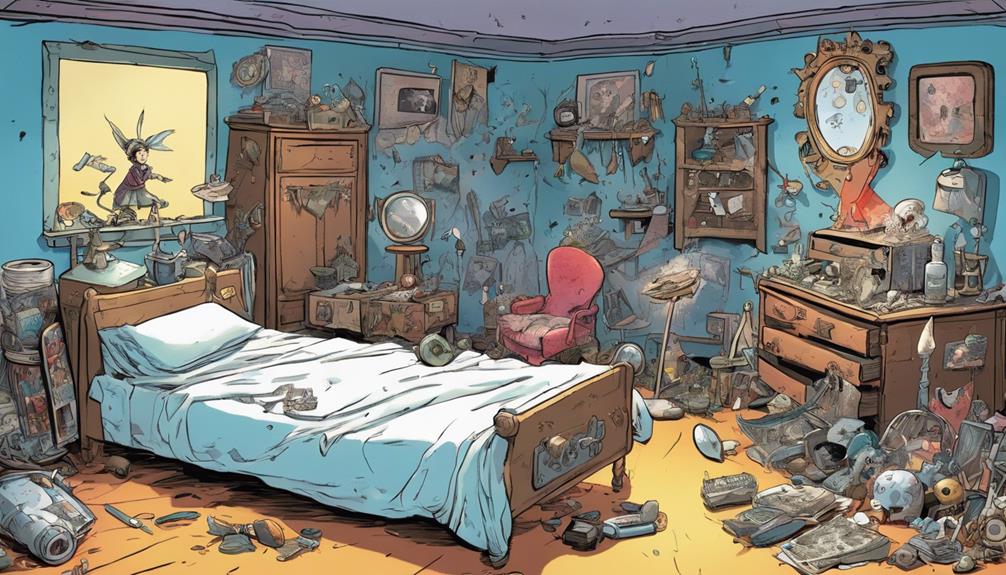The Tooth Fairy proves her magic through age-old traditions that turn teeth into treasures. When you lose a tooth, excitement builds as you anticipate the Tooth Fairy's visit. She symbolizes childhood wonder, transforming a simple rite of passage into a memorable adventure. With customs from burying teeth for luck to exchanging them for coins, she adapts across cultures, fueling imagination and joy. Parents join in, creating cherished moments that make each lost tooth special. These experiences deepen family bonds and highlight the magic of growing up. If you're curious about more enchanting tales surrounding this mystical figure, keep exploring!
Key Takeaways
- The Tooth Fairy's magic is proven through the joy and excitement children experience when exchanging lost teeth for treasures during night-time rituals.
- Creative traditions, like writing notes or leaving special requests, enhance the enchanting experience and foster a sense of wonder in children.
- Viral social media moments capture the magic of the Tooth Fairy, showcasing relatable parenting humor and memorable exchanges that resonate with families.
- As children transition to understanding reality, the enchanting memories of the Tooth Fairy highlight the bittersweet nature of growing up and cherished childhood moments.
The Tooth Fairy's Origins

Tracing back through early Norse and European folklore, the origins of the Tooth Fairy reveal fascinating customs that involved burying baby teeth to protect against hardships in the afterlife.
In these ancient cultures, losing a tooth was significant, often seen as a rite of passage. Children would receive a 'tooth fee,' known as tand-fe, as a reward for their first lost tooth. This practice not only celebrated the child's growth but also evolved into the modern concept of the Tooth Fairy.
In Viking culture, children's teeth were believed to bring good fortune in battle. Such beliefs highlight the deep-rooted significance of teeth in various folklore traditions.
As you explore the concept of the Tooth Fairy, you'll notice that this figure adopts different forms worldwide. For example, La Petite Souris in France and Ratoncito Perez in Latin cultures showcase the diverse interpretations of tooth loss rituals.
Notably, while the Tooth Fairy symbolizes a comforting tradition around losing baby teeth, her image isn't fixed. Instead, it reflects a blend of cultural influences and artistic evolution, making her a universal yet unique figure in childhood lore.
Magical Myths and Traditions
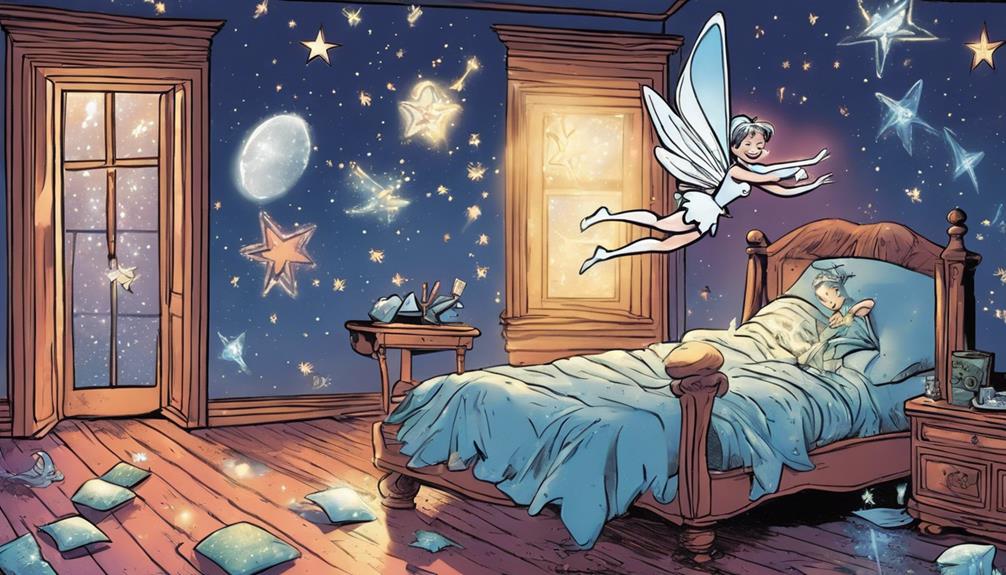
When you think about the Tooth Fairy, consider how different cultures celebrate this rite of passage.
From Norse traditions rewarding lost teeth with a 'tooth fee' to the charming image of a mouse in Spain, these myths span generations and showcase unique beliefs.
Each tradition adds a magical twist to the simple act of losing a tooth, enriching the experience for children everywhere.
Cultural Tooth Traditions
Cultures around the world celebrate the loss of a child's teeth with unique rituals that transform this milestone into a magical experience.
For instance, in some traditions, you might throw the lost tooth into the sun or fire, believing it protects the child from future hardships. In Northern Europe, losing a sixth tooth often comes with a special reward, while in France, La Petite Souris, the little mouse, takes on the role of collecting teeth instead of a fairy.
In Latin cultures, Ratoncito Perez is a beloved character known for gathering children's teeth. He even has a museum dedicated to his legacy in Madrid! The tradition of tand-fe, or tooth fee, traces back to early Norse customs, where children received rewards for their lost teeth, symbolizing a rite of passage.
Interestingly, across cultures, rodents are often seen as symbols of good luck due to their continuously growing teeth. This shared characteristic influences how tooth-collecting figures are portrayed globally.
These customs not only celebrate the change of childhood but also create lasting memories that families cherish for generations.
Myths Across Generations
Myths like the Tooth Fairy evolve over time, reflecting the changing beliefs and values of each generation while capturing the magic of childhood. You might notice how these myths across generations adapt, yet still hold onto their enchanting essence.
For example, the Tooth Fairy's origins date back to ancient Norse and European customs, where losing baby teeth was celebrated with rituals. In these cultures, children often buried their teeth to avoid misfortune in the afterlife.
Today, the tradition has transformed into a comforting rite of passage, where kids exchange lost teeth for money or gifts. In countries like Spain and France, characters like Ratoncito Perez and La Petite Souris play similar roles, showing how these magical figures exist in various forms across different cultures.
As you watch children grapple with these beliefs, you can see the Tooth Fairy symbolizing the blend of childhood innocence and the inevitable journey to adulthood.
This myth not only entertains but also reflects cultural values and societal norms, reminding you how traditions adapt while maintaining their charm. The Tooth Fairy's magic persists, thanks to these evolving myths across generations.
Cultural Variations of the Tooth Fairy
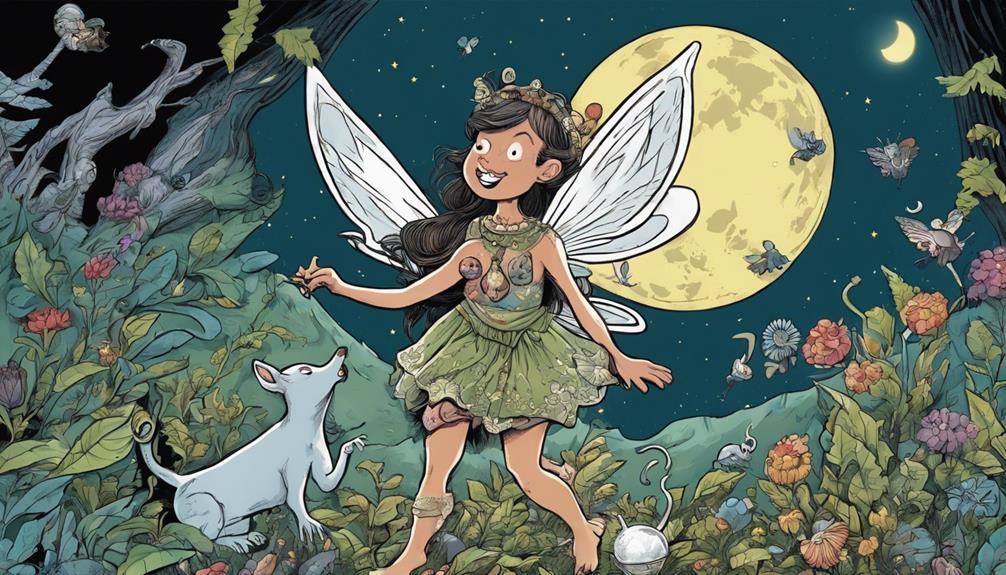
When it comes to losing teeth, different cultures have unique traditions that shape how kids experience this milestone.
You might find it fascinating that in some places, like France and Latin America, a little mouse plays the role of the tooth collector.
In Northern Europe, the sixth tooth gets the special treatment.
Plus, the symbolism of rodents across these customs highlights the belief in good luck, thanks to their ever-growing teeth.
Global Tooth Traditions
Have you ever wondered how different cultures celebrate the loss of a child's tooth? While the tooth fairy is a beloved figure in many places, various traditions around the world offer unique spins on this rite of passage.
In Northern European countries, for instance, children receive rewards specifically for losing their sixth tooth, marking a special milestone compared to the usual first tooth celebration.
In France, 'La Petite Souris' takes the stage as a mouse who swaps lost teeth for coins, showcasing a charming alternative to the traditional tooth fairy. Meanwhile, Latin cultures celebrate Ratoncito Pérez, a character who collects teeth and even has a museum in Madrid dedicated to him, emphasizing the importance of these rituals.
Additionally, different customs around disposing of lost teeth reflect diverse cultural beliefs. Some kids throw their teeth into the sun or fire, while others place them in mouse holes, all in hopes of good fortune.
These global tooth traditions highlight the creativity and significance of tooth fairies, illustrating how cultures honor the magical change of growing up through engaging and meaningful practices.
Symbolism of Rodents
Rodents play a significant role in tooth-related traditions around the world, symbolizing good luck and prosperity in various cultures. For instance, in Spain and parts of Latin America, children enthusiastically await Ratoncito Pérez, the little mouse who exchanges lost teeth for coins. This charming figure comforts kids, making the change of losing teeth feel magical.
Here's a glimpse into how different cultures incorporate rodents into their tooth traditions:
| Culture | Rodent Figure | Tradition |
|---|---|---|
| Spain & Latin America | Ratoncito Pérez | Collects teeth, gives coins |
| France | La Petite Souris | Collects teeth for small rewards |
| Northern Europe | General Mouse Symbol | Rewards children for lost teeth |
| Viking Culture | Tooth as Good Fortune | Believed teeth brought luck |
These traditions reveal a fascinating connection between rodents and the milestone of losing teeth. Through their roles, these small creatures transform what could be a scary experience into one filled with joy and excitement, highlighting the universal symbolism of good fortune surrounding dental loss.
The Tooth Fairy in Storytelling

The Tooth Fairy enchants children's imaginations in storytelling, transforming the experience of losing a tooth into a magical adventure filled with wonder and excitement. Through her enchanting tales, kids learn to embrace change and the journey of growing up.
Here are a few mesmerizing aspects of the Tooth Fairy in storytelling:
- She's often depicted as a whimsical being, exchanging teeth for treasures, reinforcing the thrill of childhood.
- Various cultural interpretations, like La Petite Souris in France, highlight her adaptability and global significance.
In books, plays, and films, the Tooth Fairy embodies themes of childhood innocence and the bittersweet shift to adulthood. Stories surrounding her not only entertain but also provide a sense of security during emotional moments.
As you read or share these tales, you're inviting magic into the mundane, reminding children that even small losses can lead to delightful surprises. The Tooth Fairy's role in storytelling continues to evolve, yet her charm remains timeless, inspiring generations to believe in the extraordinary aspects of life. As children eagerly place their lost teeth under their pillows, they are captivated by the potential for a visit from the Tooth Fairy. The anticipation and excitement surrounding the Tooth Fairy’s arrival are a testament to her enduring appeal. From her ability to turn a simple tooth into treasure to her stealthy nocturnal visits, the Tooth Fairy has successfully kept generations of children enthralled with her tooth fairy success secrets.
Childhood Beliefs and Magic
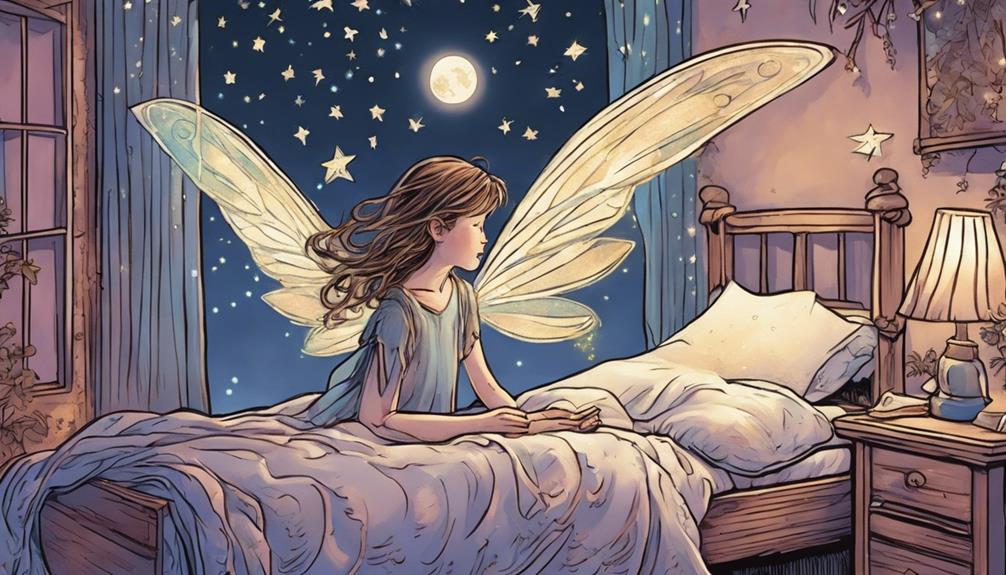
Believing in the Tooth Fairy sparks a sense of wonder that enriches childhood, connecting seamlessly with other magical figures that fill a child's world with imagination. The Tooth Fairy represents the magic surrounding losing baby teeth, symbolizing a change from innocence to a deeper understanding of reality.
This belief, much like those in Santa Claus and the Easter Bunny, fosters imaginative play and creativity. When you help your child place their lost tooth under the pillow, you're igniting excitement and anticipation. The small monetary reward left in exchange creates cherished memories that both you and your child will treasure.
As your child engages in storytelling and invents theories about the Tooth Fairy's existence, they expand their creative thinking. However, as they grow, they may start to question the reality of the Tooth Fairy. This change away from belief is a significant milestone in their journey toward adulthood, marking a deeper understanding of the world.
Encouraging this magical belief in the Tooth Fairy not only enriches their childhood but also lays the groundwork for imaginative thinking that will benefit them throughout their lives.
The Tooth Fairy Experience
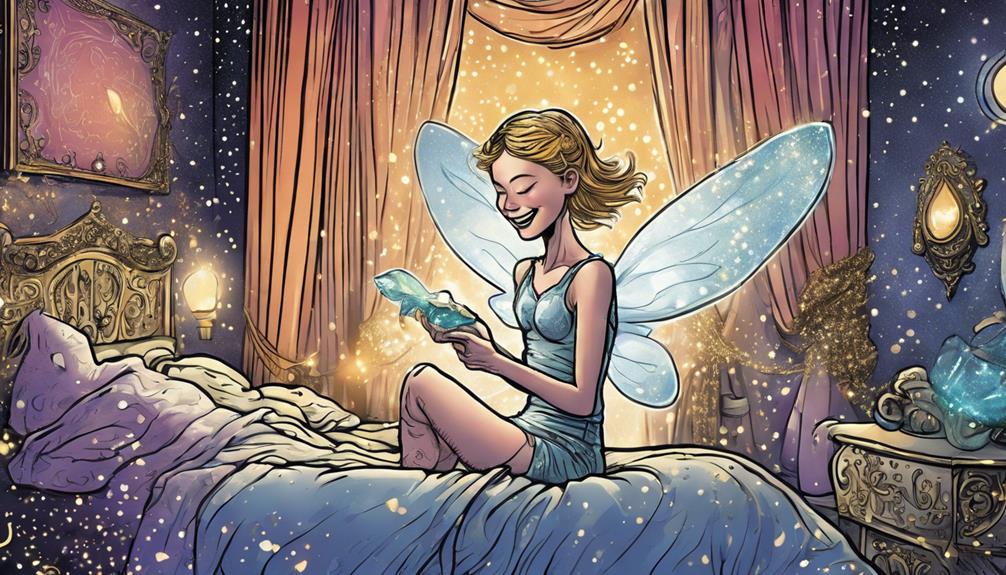
Children enthusiastically anticipate the Tooth Fairy experience, transforming the simple act of losing a tooth into a magical rite of passage filled with excitement and wonder. As they place their tooth under her pillow, they enter a world where imagination reigns supreme.
The thrill of waking up to discover what the Tooth Fairy has left behind enhances this experience. Creative rituals, like writing notes to the Tooth Fairy, further enhance the magic. Humorous moments arise when parents forget, leaving IOUs instead of cash.
This tradition not only sparks joy but also serves as a comforting presence for kids. It helps them navigate the sometimes challenging experience of losing their baby teeth. Each lost tooth becomes a story, a curiosity that fuels their imagination about how the Tooth Fairy works. Children often devise elaborate theories about her operations, showcasing their creativity.
Parents play a key role, engaging in fun rituals that maintain the magic. They might dress up, leave notes, or even create a special “Tooth Fairy” bag for the exchange.
Ultimately, the Tooth Fairy experience becomes a cherished memory, a swirling blend of excitement, creativity, and the gentle passage into growing up.
Social Media Moments
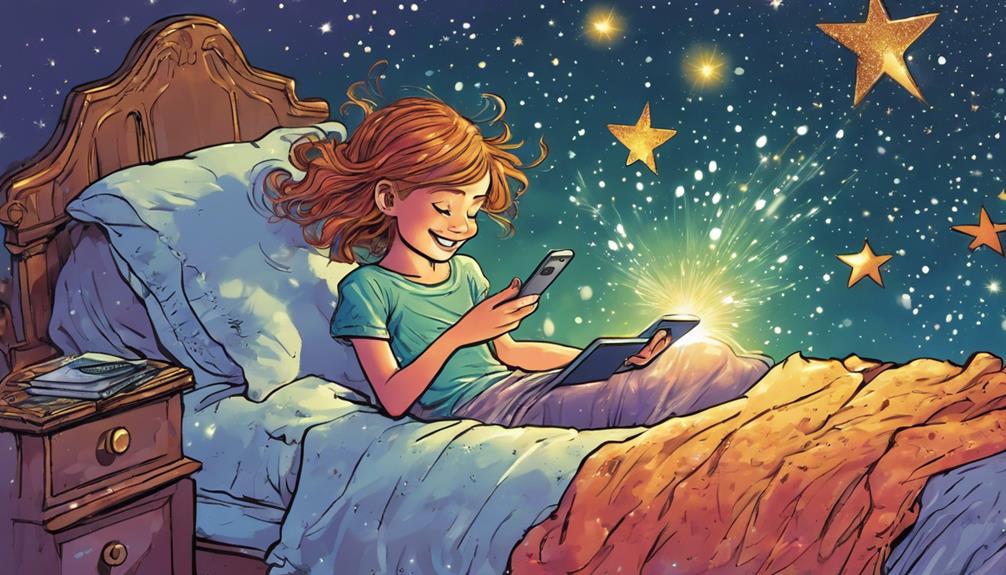
Social media has become a lively space for parents to share their funny and relatable Tooth Fairy moments, creating a sense of community around this cherished tradition. These posts often showcase the innocence of childhood curiosity and the humorous realities of parenting. You'll find everything from viral notes asking for selfies to memes about the Tooth Fairy's forgetfulness, like leaving IOUs instead of cash.
Here's a glimpse of some memorable Tooth Fairy moments shared online:
| Tooth Fairy Moment | Emotional Impact |
|---|---|
| Child asks for a selfie from the Tooth Fairy | Heartwarming giggles |
| Parent forgets to take the tooth, leaving an IOU | Relatable laughter |
| Creative requests for special fairy items | Joyful surprises |
| First lost tooth celebration | Nostalgic memories |
| Children questioning the Tooth Fairy's existence | Thoughtful reflection |
These moments resonate with many, reminding us that the magic of the Tooth Fairy isn't just about the coins but the memories and laughter shared along the way. So, don't forget to capture and share your own Tooth Fairy moments!
The Transition to Reality
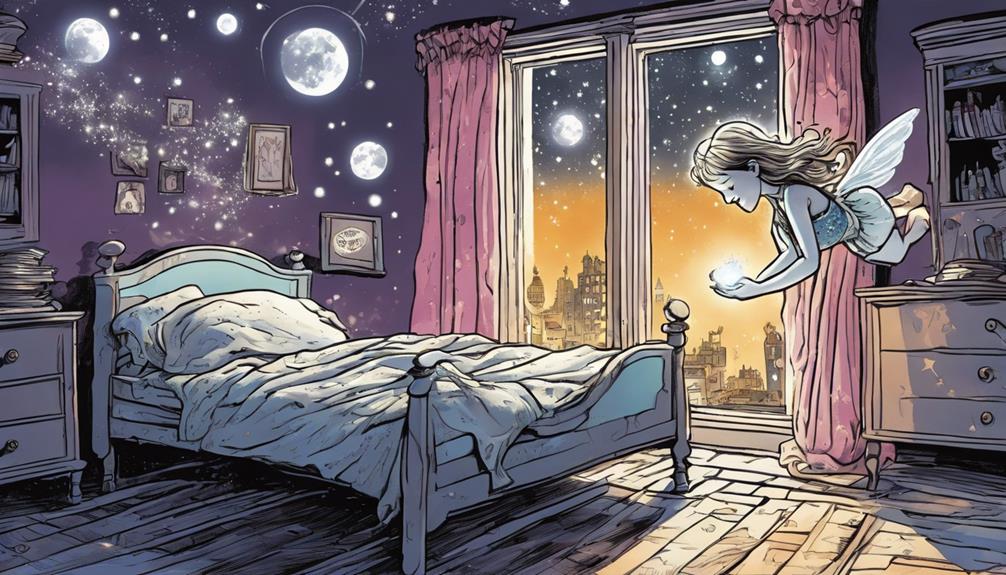
The journey from childhood wonder to the realities of growing up often unfolds as kids start questioning the existence of the Tooth Fairy. This shift typically kicks in around the age of 8 or 9, coinciding with significant milestones like losing a tooth. As children become more aware of the world around them, they begin to differentiate between fantasy and reality.
Discovering a stash of lost teeth in a parent's drawer can spark curiosity. Mixed emotions arise in parents when their children uncover the truth, signaling a change in innocence. These revelations often prompt deeper conversations about magic and reality.
When a child realizes the Tooth Fairy isn't quite what they believed, it marks a pivotal moment in their development. You might feel a touch of nostalgia for the simpler times when magic seemed real. Yet, this discovery also empowers them, opening the door to more complex discussions about life and imagination.
While the allure of the Tooth Fairy fades, the memories of the joy she brought remain, blending the beauty of childhood with the inevitability of growing up. Embracing this alteration can enrich your child's understanding of the world.
Sentimental Reflections on Childhood
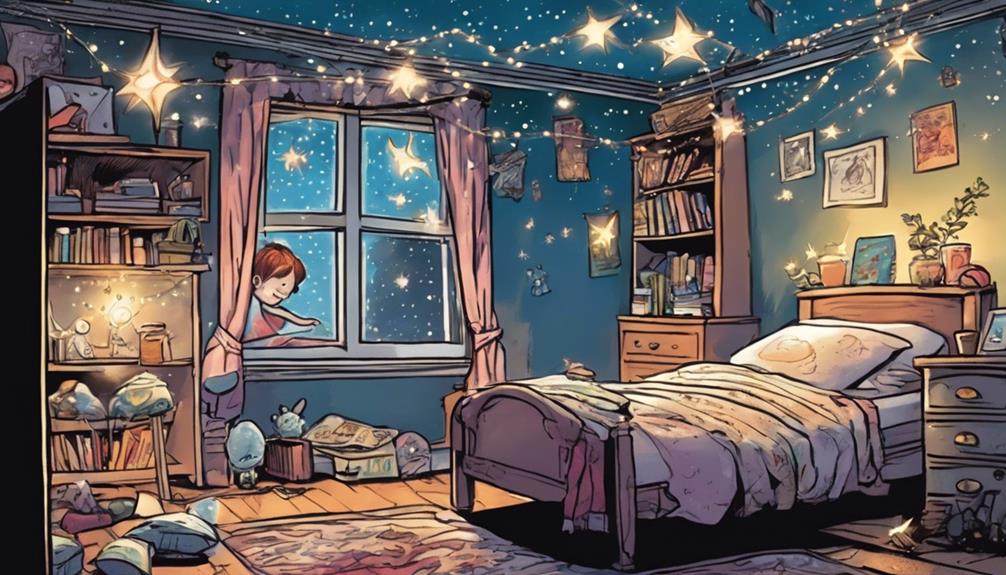
Losing a tooth and believing in the Tooth Fairy often brings a wave of nostalgia, reminding parents of the magical moments that defined their child's early years. Each lost tooth marks a special milestone, a rite of passage that your child cherishes. These moments create sentimental reflections on childhood, as you recall late-night rituals of placing teeth under pillows and the anticipation of morning surprises.
Keeping those tiny teeth serves as a bittersweet reminder of your child's growth, closing a chapter in your parenting journey. You might find yourself reminiscing about the joy on their face when they discovered the Tooth Fairy's gifts. This tradition provides comfort amid the sometimes intimidating experience of losing teeth, helping your child navigate their fears with a sprinkle of magic.
As they shift from believing in the Tooth Fairy to understanding reality, you can't help but feel nostalgic for those simpler times. The laughter, wonder, and imagination shared during this period create lasting family memories, enriching your bond. Reflecting on these enchanting moments allows you to appreciate the fleeting nature of childhood and the joy it brings to your lives.
Frequently Asked Questions
How to Answer Questions About the Tooth Fairy?
When kids ask about the Tooth Fairy, share her magical role in collecting teeth and celebrating milestones. Use fun facts and imaginative details to keep their curiosity alive while reinforcing the joy of growing up.
How to Explain the Tooth Fairy Isn't Real?
When explaining the Tooth Fairy isn't real, emphasize it's a fun tradition that celebrates your growth. Encourage a conversation about how these stories spark imagination, helping you create joyful memories just like other childhood myths.
What Is the Moral of the Tooth Fairy?
Imagine finding a shiny coin under your pillow after losing a tooth; it symbolizes growth. The Tooth Fairy teaches you kindness, celebrates milestones, and turns loss into magic, reminding you that change can be exciting and rewarding.
How Does the Tooth Fairy Work?
The Tooth Fairy works by visiting children after they lose a tooth, exchanging it for money left under their pillows. She uses her magical abilities to slip in and out undetected, ensuring the excitement remains alive.
Conclusion
As you tuck your little one in, the lost tooth beneath the pillow becomes more than just a rite of passage; it symbolizes the fleeting magic of childhood.
The Tooth Fairy's visit is a reminder that belief shapes our reality. Each coin left behind whispers the promise of dreams yet to come, urging you to cherish these moments.
Though time marches on, the magic lives on in their hearts, sparking a sense of wonder that transcends age.
